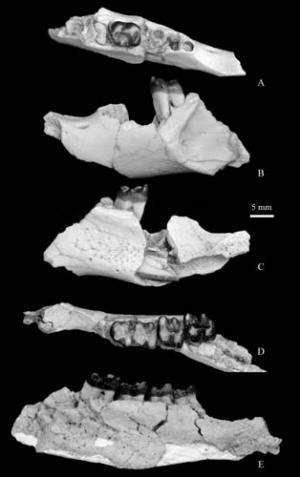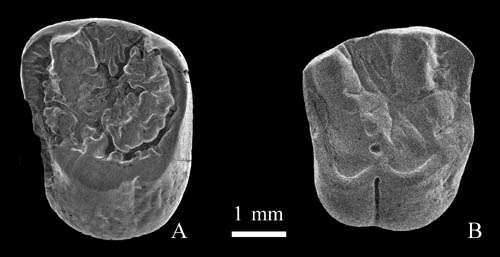Ischyromyid rodents found from the Eocene of Erlian Basin in Nei Mongol

The ischyromyids are the most primitive rodents that have a Holarctic Paleogene distribution. Members of the family are predominant in Paleogene rodents of North America, but are relatively rare in both Asia and Europe. In a study published in the latest issue of Vertebrata PalAsiatica 51(4), Drs. LI Qian and MENG Jin, Institute of Vertebrate Paleontology and Paleoanthropology (IVPP), Chinese Academy of Sciences, reported some new findings of the Eocene ischyromyids from the Huheboerhe area in the Erlian Basin, Nei Mongol, China. These include Asiomys dawsoni from the basal strata of the Irdin Manha Formation and Ischyromyidae gen. et sp. indet. from the basal strata of the Arshanto Formation. The new materials include fragmentary mandibles and numerous cheek teeth, which provide new evidence for the mammal's dispersal between Asia and North America during the Middle Eocene.
Asiomys is similar to species of both paramyines and reithroparamyines in size. The mandible of Asiomys is similar to that of Paramys delicatus in many features. Dental characteristics of Asiomys are similar to those of paramyines, but quite different from those of reithroparamyines. Researchers tentatively assigned Asiomys to Paramyinae based on the fragmentary mandible and the cheek teeth.
The teeth of Asiomys appear consistent with some evolutionary trends observed in Middle Eocene North America ischyromyids. However, Asiomys differs from other Middle Eocene Asian ischyromyids, such as Anatoparamys, Eosischyromys and Hulgana, in having a small hypocone and two metaconules on upper molars, a complete hypolophid on dp4 and a short hypolophid and a small hypocounulid on lower molars.

"Because Asiomys is more similar to the North American ischyromyids than to the Asian ones, it provides a new evidence for faunal exchanges between Asia and North America during the Middle Eocene", said first author Dr. LI Qian of the IVPP.

More information: Read the study:
Journal information: Vertebrata PalAsiatica
Provided by Chinese Academy of Sciences




















